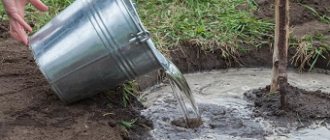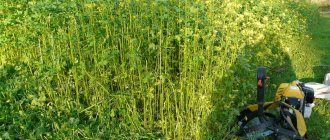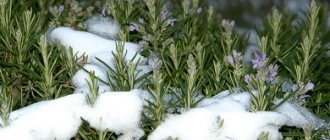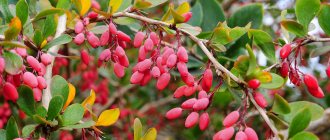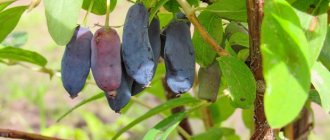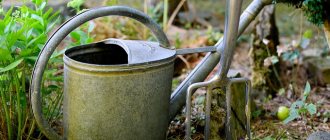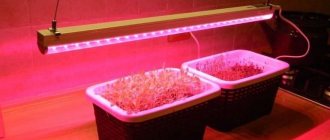Main characteristics of dolomite flour as a fertilizer and its difference from lime
The composition of dolomite flour includes calcium, which exceeds the lime content by 8%. Additionally, the fertilizer contains magnesium. The substance is necessary for plant growth and prevents the development of fungal diseases. The total mass fraction of calcium and magnesium carbonates is about 90%. In this case, calcium carbonate (CaCO3) usually accounts for about 50%, and magnesium carbonate (MgCO3) for about 40%. All components are aimed at changing the acidity pH. Dolomite flour helps plants in the following ways:
- Improves the composition of the crop area.
- Creates conditions for the development of necessary microorganisms.
- Its constant use leads to the saturation of the upper layer of the earth with substances.
- Helps improve the digestibility of other compatible fertilizers.
- Frees crops from radiation.
- Eliminates garden pests.
Due to the higher calcium content than lime in dolomite flour, the development of the root system is improved when the product is used on crops. Magnesium helps improve photosynthesis in plants, and this substance is not included in lime. If this element is missing, then crop shoots will develop more slowly. Lime used in the garden for agricultural plants will not fully deliver the necessary substances. Therefore, crops will begin to wilt and leaves will begin to fall without magnesium.
However, lime helps restore acidity to the soil. For this purpose, a slaked type of fertilizer is used. Unlike dolomite flour, lime is 1.5 times more effective, but at the same time it is more difficult for plants to absorb fast-acting fertilizer. The main advantage of dolomite flour is that it can be used at any time of the year.
Soil deoxidation
Before using dolomite, you should find out the degree of acidity of the soil. Otherwise, you can do more harm to the plants than good.
To determine pH, they rely on a 14-point scale. Based on the results obtained, three types of soils are distinguished:
- Alkaline – from 7.
- Neutral – 7.
- Sour - those up to 7.
In addition, soil composition is a significant factor. In particular, the predominant component: humus, clay or sand.
Special devices, which are widely available in retail gardening stores, will help you accurately determine the level of soil acidity.
Benefit
- Normalizes acidity.
- Supplies the soil with useful minerals.
- Improves the physical and biological properties of the soil.
- Enhances the effect of other fertilizers.
- Strengthens intercellular metabolism, accelerates photosynthesis.
- Preserves the harvest and improves its taste.
- Forms a powerful root system.
- Fights pests.
Harm
The negative effect of dolomite is often due to its incorrect use or neglect of the advice of knowledgeable gardeners.
- If the acidity level is 6, you should wait a little with liming. There is no need for it for now.
- Failure to comply with the dosage will lead to the death of plants, especially when adding flour in the spring.
- Haste and incorrect combination with other fertilizers leads to disastrous results.
Application of fertilizer depending on the acid composition of the soil
If the acidity level in the soil is less than 4.5, then the soil needs feeding. In order not to introduce more dolomite flour into the soil, you will need to monitor the norm, which is in the range of 5-7. Many types of agricultural crops are not suitable for oxidized soil, so the area for sowing plants needs fertilizing. In addition, under these conditions, pathogenic microorganisms begin to develop, negatively affecting plant development.
When fertilizers are not poured into a problem area of land, the substances necessary for plant growth will continue to be washed out of the soil and will no longer be absorbed.
To use dolomite flour, you will need to determine the acidity of the soil. This procedure is performed in several ways:
- Vinegar. A small amount of vinegar essence is poured onto a previously taken handful of soil from the garden; if foam forms, then the soil has low or neutral acidity.
- Grape juice. A pinch of soil is placed in a pre-prepared vessel with juice and if the color of the liquid changes or bubbles appear, it is noted that the acidic environment is normal.
- Currant leaves. Several leaves are placed in a glass container, poured with boiling water, and then a handful of soil is added, and if the color of the water changes to a red tint, this means increased acidity.
In addition to home methods for determining soil acidity, there is testing using litmus strips. Otherwise, you should carefully inspect the garden for the presence of horsetail, buttercups, moss, sorrel or plantain. These plants warn that the soil has a high pH. Based on the data obtained, fertilizing is carried out.
Calculate the amount of dolomite flour per 1 hundred square meters. If the indicator is less than 4.5, then up to 50 kg of fertilizer is added to the soil. Under normal soil conditions, 45 kg of fertilizing will be required. If slightly acidic soil is found, where the indicator reaches 5.7, then up to 40 kg of fertilizer is applied.
Submission rules
Fertilizer powder will be useful if the soil on the site is acidic and needs to be made more alkaline. Before use, you need to understand the acidity of the soil. This is done using litmus paper in the laboratory. You can also find out how acidic or alkaline the soil is using vinegar essence. If you do not follow the dosage of applying the powder and use it uncontrollably, this can affect the yield of the plantings.
Treatment of the entire plot, beds
If the gardener decides to treat the entire plot, then, depending on the acidity of the soil and additional fertilizer with mineral agents, the effectiveness of fertilizing is from six to nine years. Efficiency also depends on the level of precipitation, for example, heavy rain, snow. Dolomite flour should be scattered over the entire area of the bed and leveled using a rake. After fertilizing, the soil is additionally dug up with a shovel to mix the product with the soil.
This is done so that the active ingredients of the fertilizer begin to work faster. Otherwise, the gardener will have to wait until it rains and the product is absorbed into the substrate. Beneficial substances will enter the soil and begin to affect the plantings and the acidity of the soil. But heavy, regular rains can also wash flour and all other fertilizers from the ground that the gardener used to feed the plants.
Popular: How to grow green Aspidistra at home
Processing in greenhouses and greenhouses
The fertilizer is environmentally safe and can be used in open ground and greenhouses. To fertilize the plantings, it is enough to apply 100 grams of powder per square meter of area. But here, scattering the product on the ground and leveling it, additional digging of the soil is not recommended. The powder should remain on the surface of the beds and form a thin film. This will help retain moisture in the soil. Water after processing dolomite flour will not evaporate so quickly. After fertilizing, the soil in the greenhouse will not dry out.
Is it possible to replace dolomite flour?
You can deoxidize the substrate not only with the help of dolomite flour. A number of other means are used, such as fluff lime. This is slaked lime, which neutralizes the acidity of the soil. There should be a longer period between plantings than when treated with dolomite flour. The beds should be fed with lime when digging the soil in the fall. This is done after the harvest has already been harvested. Experienced gardeners recommend adding lime once every six years.
To deoxidize the soil, it is possible to fertilize with wood ash. It is recommended for processing slightly acidic soil with an acidity level of at least 5.5. The ash contains potassium, phosphorus, zinc, sulfur and a number of other useful substances. The soil should be fed during autumn or spring digging. You can also enrich the soil by adding ash to each hole when planting. In summer, the fertilizer is dissolved in water and watered on vegetable and fruit crops.
One of the substitutes for such fertilizing can be agromel. In its action it is similar to this powder in its deoxidizing effect. Agromel is used to fertilize the soil once every six years. In this case, the ground must be dug up. In addition, the product can be poured directly into the holes, directly onto the surface of the bed and leveled. The drug is soluble in water and can be used for irrigation in summer.
It is recommended to replace dolomite flour with lime and agromel in highly acidic soils. It is recommended to scatter wood ash over the surface of slightly acidic soil. To improve the speed of action of the flour, it should be buried, so it gives a greater effect than a product scattered on the surface of the bed.
The gardener must be prepared that the effectiveness of the product does not appear immediately. Typically, the soil structure improves within two to three years. Then the effect of the fertilizer begins to gradually decrease. Due to energy consumption and high powder consumption, this method is rarely used by agronomists to reduce soil acidity.
Currently reading:
- Choosing cucumbers for open ground according to your preferences
- Restoration and stimulation of orchid flowering with succinic acid
- We improve and restore compost with Em-preparation
- Planting to decorate the site with three types of coniferous trees
Share the news on social networks
About the author: Victoria Semyonovna Nakhodkina
Leading researcher at the laboratory of vegetable and berry crops, Yakut Scientific Research Institute of Agriculture, Siberian Branch of the Russian Academy of Agricultural Sciences, Republic of Sakha (Yakutia).
Instructions for using dolomite flour in the garden
To provide the necessary minerals to garden crops, you will need to familiarize yourself with the rules for using dolomite flour. First you need to distribute it over the area of soil. This procedure is carried out evenly, the substance should be mixed with the soil. It is necessary to loosen the soil by 10 or 15 cm. If fertilizing is applied near bushes and trees, then the powder is distributed along the edge of the circle near the trunk. In this case, the fertilizer should be deepened into the ground.
If the soil has a clay structure, then dolomite flour is added every year. After using it, you will need to dig up a section of soil. When feeding flowers, fertilizer is applied to the hole.
Usefulness of the product
What is dolomite flour used for? Fertilizer is recommended to be used to nourish plant roots with useful substances. With its help, the quality of the soil improves. When, after the treatment, the gardener adds other fertilizers, the beneficial substances from them are better absorbed by the crops. Using the powder, plant photosynthesis is accelerated.
In addition, the taste of the fruit improves, and the harvested crop is stored longer. Plant roots become stronger. Dolomite flour can be used as an insect killer. It breaks down the chitinous layer of their shells, acting as an abrasive. Despite this, the fertilizer is environmentally friendly and practically does not harm the soil and plantings. Before applying it, the area must be additionally prepared.
After adding flour, the soil is saturated with minerals, for example, nitrogen, potassium, etc. In this form, the substances are well absorbed by the plantings. Magnesium in the fertilizer enhances photosynthesis. Fertilizing neutralizes radionuclides. Even after processing, the collected fruits and roots remain environmentally friendly and are stored for a long time. The powder is capable of destroying weeds and harmful insects.
Advantages and disadvantages
The fertilizer is environmentally safe and has a positive effect on the soil structure. It reduces acidity and helps to obtain high yields. It is used throughout the growing season. The only drawback of feeding is the cumulative effect. The product does not help immediately. Top dressing is an almost ideal fertilizer. There are no negative effects when soil is enriched.
Popular: Planting the three best varieties of Radermachera at home
Basic rules for applying fertilizer depending on the season
Dolomite flour is used both to feed potatoes and tomatoes, and to accelerate the growth of legumes in the garden. Fertilizer is applied before planting cabbage and radishes. This requires 500 g of dolomite flour per 1 square meter. m. Fertilizing is used when growing fruit trees planted from seeds. In this case, fertilizer is applied after collecting 2 kg of fruits in a circle around the trunk. You cannot use dolomite flour on the area sown with the following crops:
- sorrel;
- celery;
- blueberries;
- gooseberries;
- cranberries
You can use dolomite flour in the garden both in spring and autumn. If fertilizer is applied before planting, then fertilizing should be applied 2 weeks before the intended sowing. This is necessary for the absorption of substances in the soil, so that the risks of infection of plants during their growth are reduced. At the same time, fertilizing is applied to potatoes and tomatoes in the autumn when digging up the soil.
Dolomite flour, like lime flour, is used and applied to the soil in the garden next to the tree trunk. For an average seedling you will need up to 3 kg of feeding. If the vegetation is lush, then 1.5 kg of fertilizer will be required. In this case, the crystals of the substance should be deepened into the ground by 7 cm. You cannot apply mineral fertilizer to apple and pear trees more than once in 4 years.
Useful tips
Not all gardeners are ready to purchase a special device to determine the acidity level of the soil on their site. Therefore, before using dolomite flour, they are guided by their own methods for determining soil pH.
- By inspecting your possessions.
Sometimes it is enough to walk around the site to understand in which areas it is necessary to add dolomite. Weeds are excellent guides in this matter. So, if woodlice has firmly established itself in the beds, and not only during the rainy season, then the soil here is very acidic. The growth of loaches or sparrows indicates a neutral or slightly alkaline pH. Dandelions and chamomile like slightly acidic soils, but quinoa and nettle prefer extremely fertile, neutral soil.
- Using an infusion of black currant leaves.
Place several currant leaves in a jar, add hot water, leave to infuse, and cool. To determine the acidity of the soil, take a handful of soil and pour it into this jar. Then mix, wait for sedimentation and analyze. If the soil is acidic, the solution will take on a reddish tint; if it is neutral, it will be green; if it is slightly acidic, it will be bluish.
- Using 9% vinegar.
Take a handful of soil, water it with acetic acid and observe. If small bubbles appear on it, it means a reaction has begun. In such cases, a conclusion is drawn about the presence of alkali in the soil. If nothing is formed, the soil is acidic, which is why vinegar did not react with it.
How to use dolomite flour in greenhouses?
Dolomite flour, being a soil deoxidizer, is distributed over the beds or garden area in the amount of 1 cup per 1 square meter. m. If the fertilizer was applied to the site in a greenhouse or closed land, then you should not dig up the soil. The substance forms a film on the soil surface that allows it to retain moisture. To fertilize plants in greenhouses, soil liming is carried out using two methods.
Agronomist Mitlider's method is to use 1 kg of fertilizer. At the same time, take 8 g of boric acid and distribute it over the greenhouse area. Then they dig up the soil and wait 7 days. When the time is right, they begin to add mineral chemical fertilizers to the soil. In order for the components to be absorbed in the soil and the minerals to penetrate deeply, it is necessary to dig up the area again. This tillage method is also suitable for open ground.
To prepare a mineral product according to the method of agronomist Makuni, you can use a bucket. To make a mixture for planting, take a 12 liter container, and then put the following components into it:
- 2 liters (or 1/6 of the container) of soil from the greenhouse;
- 2 liters (or 1/6 of the container) of purchased soil;
- 1/6 part of a container of sphagnum moss;
- 1/12 part of a container of river sand;
- 1/3 of the container or 4 liters of peat;
- 1 tbsp dolomite flour;
- 1 tbsp double superphosphate;
- 500 g charcoal.
All components are mixed, and the product can be used for fertilizer. The mixture is used for planting indoor plants or growing crops in greenhouses.
Why is soil acidification dangerous?
Sediment and plant roots remove useful elements from the soil such as calcium, magnesium, potassium and sodium. Hydrogen ions take their place, so the soil becomes acidic. Increased acidity is dangerous for the following reasons:
- Ions of heavy metals, iron, aluminum, manganese and radionuclides are well absorbed by the roots, which makes the fruits toxic.
Best performance with flour fraction from 1 to 0.1 mm.
- Nitrogen, potassium and phosphorus, on the contrary, are absorbed very poorly or become completely unavailable to plants. Without receiving the substances necessary for growth, crops lag behind in development and are affected by chlorosis and rot.
- Beneficial flora dies, and harmful bacteria increase.
- The structure of the soil is disturbed.
The soil can have 3 degrees of acidity:
- high – pH less than 4.5;
- medium – pH from 4.5 to 5.2;
- low – pH 5.2 to 5.6.
Most vegetable and fruit crops thrive in slightly acidic soils. On medium-acid and very acidic ones there are only isolated specimens.
Video about how and why to apply dolomite fertilizer.
The following will help you determine the pH of the soil yourself:
- Portable acidity meter. The device, of course, costs money, but it will accurately show the level of hydrogen ions in the soil. Not all summer residents can use it, so we bring to your attention other ways to determine soil acidity.
- Litmus papers. The soil is diluted with boiled or distilled water in a ratio of 1:5. The solution is filtered and the indicator is immersed in it. If the piece of paper turns red, then the soil is acidic. The richer the shade, the lower the pH level.
- Baking soda. Soil taken from a hole 25 cm deep is placed on a flat surface and a soda solution is poured onto it (1 tbsp per 200 ml of water). If gas bubbles form on the surface, the earth is acidic.
- Cherry and currant leaves. They are placed in boiling water for a quarter of an hour, and then a little soil is added to the resulting liquid. If the water turns blue, acidification has occurred.
Fertilizer application
- Wild flowers, herbs. If there is a lot of horse sorrel, horsetail, and buttercups on the site, the soil is very acidic. When acidity is low, cornflowers and ferns will spread throughout the area.
When is liming carried out?
Deoxidizing a garden plot with dolomite flour does not give results immediately. The reaction in the soil begins after 3-4 months, reaching its peak only after 2-3 years of regular cultivation.
The best time to apply fertilizer is September or October.
- How to use a deoxidizer in the fall?
When the harvest has already been harvested, the flour is scattered around the garden, leveled with a rake, and then embedded into the soil on the bayonet of a shovel. If it was not possible to lime the soil in the fall, the procedure can be carried out at the end of winter or beginning of spring (February-March). Crushed dolomite is scattered on the surface of the snow cover and left in this form until April. When the snow melts, the fertilizer will penetrate into the ground along with water. The work will be meaningless if:
- snow cover thickness above 30 cm;
- the site has a large slope;
- strong wind blows;
- the fertilizer got wet.
Using dolomite in a greenhouse
The use of stone flour is also possible in April-May. It is applied to the site for spring digging, 15-20 days before or during planting, pouring granules directly into the furrows.
Lime fertilizer is also used for summer feeding of crops and for pest control. Usually it is diluted with water, using a solution for irrigation every 7-10 days. Combined liming is suitable for large areas. 2/3 of the norm of granules is poured into the ground in the fall, 1/3 is applied during spring plowing.
Compatibility with other fertilizers
If dolomite flour is added to the planting area, then urea, superphosphate and nitrophoska cannot be used. Additional fertilizers are applied after 14 days. Dolomite flour should not be combined with ammonium nitrate, ammonium sulfate and azofoska.
Bordeaux mixture, compost and iron sulfate compensate for the shortcomings of dolomite flour. Therefore, these fertilizers can be used to feed plants along with it. The use of dolomite flour together with boric acid and peat has a positive effect on crop growth.
What is it, composition
Dolomite (or limestone) flour is a product of crushed and dried natural mountain mineral dolomite. In its structure, dolomite flour is free-flowing and volatile. It is similar in appearance, color and consistency to cement.
Dolomite is a natural mineral (carbonate) consisting of carbonic acid salts. It was discovered by the French geologist and engineer Deod de Dolomier at the end of the 18th century. A mineral of medium hardness, durable but brittle.
Chemical composition:
- 30.4% – calcium oxide (quicklime) – a natural soil deoxidizer; accelerates the formation and strengthening of the root system;
- 21.7% – magnesium oxide (burnt magnesia) – the main element of plant nutrition; increases the productivity of fruits, berries, vegetables; affects the setting of root crops; participates in the formation of chlorophyll molecules (photosynthesis process);
- 7.5% – calcium carbonate (a mixture of carbonic acid and calcium salts);
- 47.9% – carbon dioxide (carbon dioxide).
Impurities (up to 2%) are important elements of nutrition and growth:
- zinc;
- phosphorus;
- nickel;
- gland;
- lead;
- potassium;
- manganese
Microelements regulate metabolic processes, stimulate the growth of roots and green mass, accelerate germination, affect the ovary and fruiting, disinfect the soil, disinfect seeds, and synthesize vitamins.
Precautions when using fertilizer
If limestone flour is often used in the garden, then crop loss occurs. Therefore, you should not abuse it frequently. For each crop, you should know the amount of fertilizer used so as not to overdo it in soil deoxidation. If this is not taken into account, then young plantings will grow poorly or become sick.
When using several types of fertilizer, it is necessary to determine the compatibility of the substances with each other. If dolomite flour is applied to the soil correctly, then from the moment of first use the soil will become more fertile. The result can be detected in at least 2-3 years. The land will produce up to 15% more harvest.
Which plants respond best to limestone flour?
Next, we’ll figure out which plants limestone flour should be applied to. Dolomite flour, the use of which in the fall is a very effective procedure, can be used to increase the yield of almost any garden crop. Of the fruit trees, stone fruits respond best to this substance. Also, its use significantly increases the yield of vegetables. This method of soil improvement is most effective on cabbage. This product is also often used to increase the yield of tomatoes, eggplants, peppers and potatoes. It is worth adding flour for legumes, salads, barley and cucumbers.
In autumn, dolomite flour should be added under all winter crops. This could be garlic, winter onions, ornamental garden plants, etc. According to the results of research conducted by scientists, the use of lime flour can help increase productivity by 4-12%. The most noticeable effect of its use appears approximately a year or two after application to the soil.
Of course, there are plants that do not respond too well to a substance such as dolomite flour. The use of this product under gooseberries or sorrel in the fall or at any other time of the year is not recommended. It is not used for cultivated plants even if the soil on the site has a neutral or alkaline reaction.

